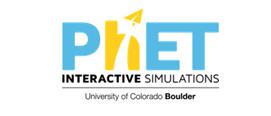Wave motion
When studying the behaviour of waves, one of the challenges that students faces is that they cannot see the thing that is causing the wave to happen whether it is oscillating air particles or an electromagnetic field. Having visualisations and simulations can really help students ‘see’ what is happening and get a sense that the wave moves energy from one place to another but the thing it travels through does not move with the wave (or even need to be there at all). The first few links provide some suggestions to help in this regard and the jelly baby wave machine is very much worth the effort!
Whilst this list provides a source of information and ideas for experimental work, it is important to note that recommendations can date very quickly. Do NOT follow suggestions which conflict with current advice from CLEAPSS, SSERC or recent safety guides. eLibrary users are responsible for ensuring that any activity, including practical work, which they carry out is consistent with current regulations related to Health and Safety and that they carry an appropriate risk assessment. Further information is provided in our Health and Safety guidance.
- ALL
- Teacher guidance
- Video
- Interactive resource
- Activity sheet
- External link
Teacher guidance
Episode 309: Generating Waves
The student activity on this resource will allow your students to use slinky springs to develop their understanding of the material already covered. There is also guidance for you to demonstrate the ripple tank and to show longitudinal waves on a row of dynamics trollies. By linking the trollies so they are at right angles to the springs you can also show transverse waves.
If the links don’t work within the resource item go directly to the website.
Sound 11-14
Use this resource for background, for suggestions and guidance on practicals to do further work on sound. Go straight to the Physics narratives and Teaching approaches and select what you want to use. Certainly try the ‘Range of hearing’ and ‘Seeing and hearing spectra’ activities. Here is alternative resource for Range of human hearing.
Sound waves - R2P
This resource provides a lesson plan showing how to use musical instruments to teach about sound waves. The lesson outlines a set of activities that can be used to demonstrate that sound is caused by vibrations along with some key questions to ask. A 'slinky' spring is then used to explain how sound travels through air as a longitudinal wave. A research summary discusses the common misconceptions pupils have around the topic of sound and how musical instruments can be used to correct pupils' understanding.
Video
Wave machine
Wave machines can be bought, but how much more engaging to make your own with your students. See how useful one is for introducing and explaining some of the basics with the transverse waves it produces.
Oscilloscope
Watch this video if the oscilloscope is unfamiliar to you or show it to your students for guidance before letting them loose on a class set of oscilloscopes. If you have enough microphones your students will enjoy spending a few minutes whistling and singing to see the variation of waveforms that they can produce on the screen.
Signal generator
Again use this video in preparation for practical work and demonstrations using this kit. The arrangement shown is the standard for introducing sound and with a little planning you can put together an entertaining lesson. Try putting a lit candle in front of the speaker to show the air movement produced at low frequencies.
Ultrasound *suitable for home teaching*
This video clip serves two purposes. It shows how ultrasound is used as an imaging technique to see inside the body. It also gives your students with an interest in football the idea of a physics based career related to football. The teachers’ notes and resources that accompany the video will allow your students to explore the imaging technique further.
Mapping the Sea *suitable for home teaching*
In this video clip your students will see how the ultrasound technique is used in echo location so that we can see what is beneath the surface of the sea.
Lighting Designer *suitable for home teaching*
This clip illustrates the major role that science, technology, engineering and mathematics play in the creative industries. The video follows Will, a lighting software designer, who describes the need for a good grounding in physics and mathematics to help him design the lighting for concerts, plays, films, pop videos and other entertainment events.
A waves on water distance and time Gratnell tray
This video explains how to measure the speed of water waves using an alternative to the ripple tank wave experiment; water in a Gratnell tray. In order to calculate the speed of a wave, we need to measure the distance covered by a wave in the time it takes to cover that distance.
Sound with an oscilloscope
In this video an oscilloscope simulator on a laptop is demonstrated to visualise a sound wave and calculate its frequency.
Waves in a solid
The speed of a wave in a solid is investigated in this video. A signal generator and length of elastic are used to measure the frequency and wavelength of a wave, which allows wave speed to be calculated.
Waves on water (distance and time)
A ripple tank is used in this video to calculate the speed of a water wave by measuring the distance and time. This is a GCSE Combined Science and Physics Required Practical.
Waves on water (frequency and wavelength)
A ripple tank is used in this video to calculate the speed of a water wave by measuring the frequency and wavelength. This is a GCSE Combined Science and Physics Required Practical.
Interactive resource
Wave on a String
You could use this simulation with your students to continue exploring the behaviour of a transverse waves. On the oscillate setting, pause the animation and use the rulers to measure amplitude and wavelength; then with the frequency calculate the speed and explore how this changes with tension.
Activity sheet
Waves, Radio Waves and Microwaves
This resource is here just for the ‘Describing waves’ activity sheet. Use a slinky spring to show transverse waves and to introduce longitudinal waves. Then show them this video clip on seismic waves. After a discussion of seismic waves you can give them the activity sheet to pull it all together.
External link
Refractive Index Simulation
An interactive Phet simulation for both teachers and students. Explore bending of light between two media with different indices of refraction. See how changing from air to water to glass changes the bending angle. Play with prisms of different shapes and make rainbows.









